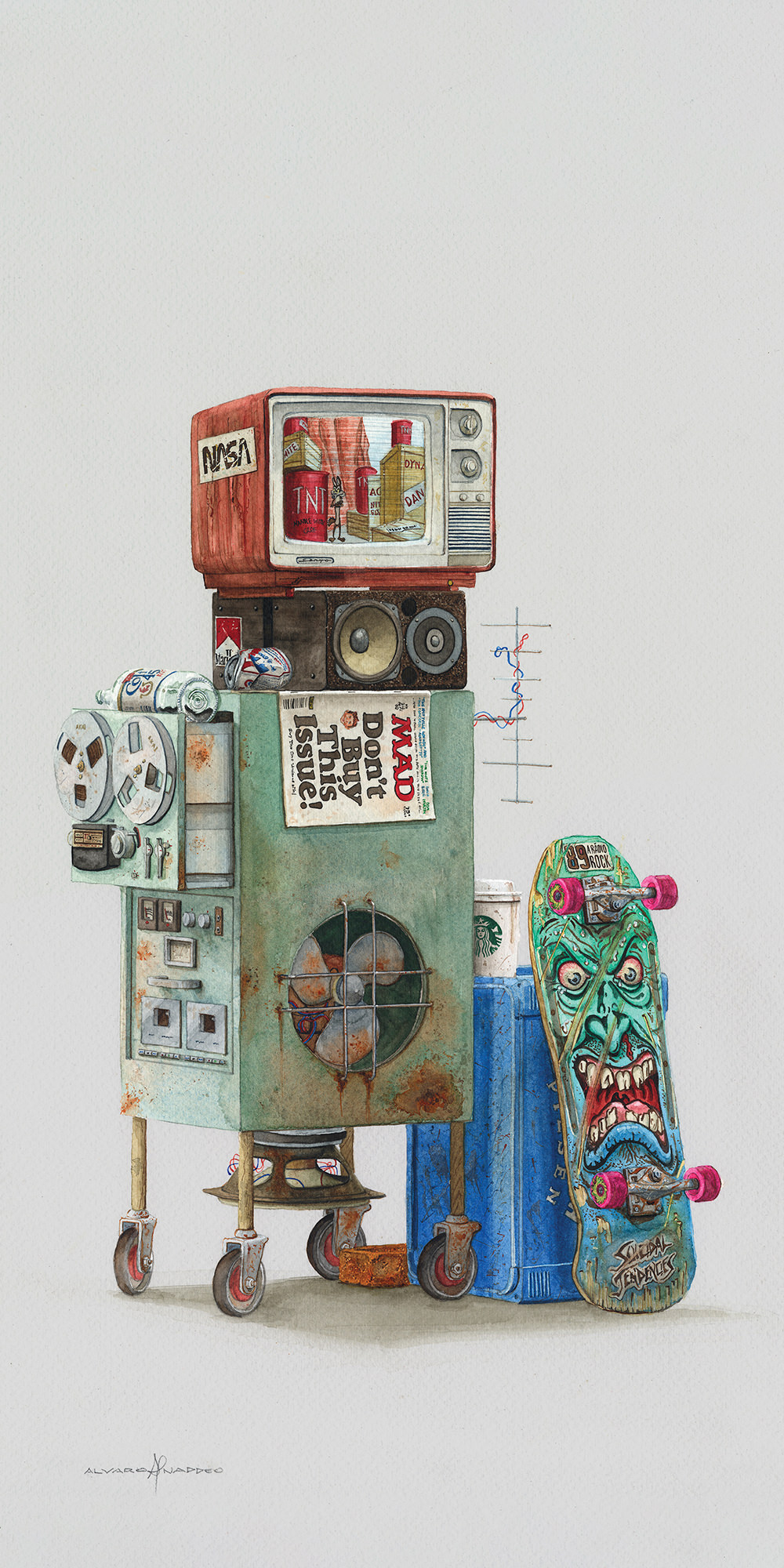When I recently reviewed the Fredenstein Bento 8 500 series chassis [Tape Op #144], the company kindly included a clutch of their own 500 Series units to demo as well. I had fun tracking and mixing through all of them, but the Artistic EQ emerged as the most useful and cost-effective of the lot. You can snag four of these for less than a single channel of the API 3-band EQs (that I love). For this reason, I see the Artistic EQ appealing primarily to people like me, with home/project studios that are looking to add some transparent outboard EQ without breaking the bank. However, if you have a larger console with empty 500 Series slots, you might consider springing for a pair of these as well.
The three filter bands offer 14 dB of cut or boost: 2 to 20 kHz on the top, 30 to 300 Hz on the bottom, and 300 Hz to 3 kHz for the midrange. You can select between shelf and bell curves for the high and low frequency adjustments. Given there are only three frequency bands at play here, I generally use plug-ins for subtractive sculpting, then use the Artistic EQ for broad boosts, but I appreciate the ability to switch to a bell curve and boost or cut more selectively – which is especially helpful on drums and vocals. The midrange frequency band conveniently overlaps with the high frequencies and – most usefully – allows you to carve out some 400 Hz mud in the low mids while still boosting lower frequencies. As a result, I found the Artistic EQ to be a good candidate for kick drum and floor tom duty.
With the return of in-person (but limited-capacity) live shows, the Holland Project – Reno’s all-ages arts and music initiative – recently handed me a bunch of multitrack files to mix. Thus, I had plenty of opportunities to put the Artistic EQ to use. Local band Bug Bath is reminiscent of early Pavement [Tape Op #15], but with heavier guitars. Bassist Bijou Bell plays a Fender Bronco, recorded in this instance with a Shure SM57 in front of the amp. To ensure her bass didn’t get lost in a sea of distorted guitars, I boosted below 50 Hz, brought out some body with some 300 Hz, and tamed some pick-related harshness at 8 kHz. The Girls Rock Reno summer camp recently concluded with an inspiring showcase, expertly tracked by in-house engineer Allison Clift-Jennings. For the mix, I put the Artistic EQ to work on the snare drum, attenuating high frequencies (creating a shelf at about 15 kHz) while adding a little body at both 200 and 300 Hz. While mixing the new Fine Motor album, on the other hand, I was glad to have an EQ for singer Casey Bell. Vocals are a rare instance when I’ll boost high frequencies, and a small boost above 9 kHz on the Artistic EQ brightened and lifted the vocal without making it sound harsh. The lighted hard bypass labeled “EQ IN” on the front panel made before-and-after comparisons easy. To my ears, the Artistic EQ sounded a little thicker, stronger, and more musical than making the equivalent moves with my plug-in EQs. Working with the Fredensteins made me excited to incorporate more outboard into my hybrid workflow, especially now that I have a few trusted compressors – I generally prefer to EQ after compression while mixing.
In addition to handy EQ curves, the Artistic EQ also incorporates a socketed OPA2 discrete op-amp that can be swapped out for other pin-compatible modules (API 2520, Jensen 990, etc.), and an American-made, steel-core output transformer.
That said, I have a few complaints. Though you could use the high shelving filter as a low cut during tracking, a dedicated low pass filter would be nice. Fredenstein sticks out from the competition not only with its affordable prices but also with a design philosophy that values clarity over color. Perhaps in anticipation of this, Fredenstein added a Color mode switch to the faceplate that when engaged “emulates tube amp characteristics.” But even in Color mode, it’s not as colorful as some might wish – I found it to be too subtle for my rock and soul taste. On the other hand, engineers working on jazz and classical records would consider this a blessing. Or, if you get the color you want from your compressor, the Artistic EQ will complement and enhance the signal without getting in the way. Even considering my minor gripes, I remain floored by the affordability of these EQs. At this price, you can add a bunch of outboard EQs to your hybrid setup and get a little closer to the large console sound.




_disp_horizontal_bw.jpg)